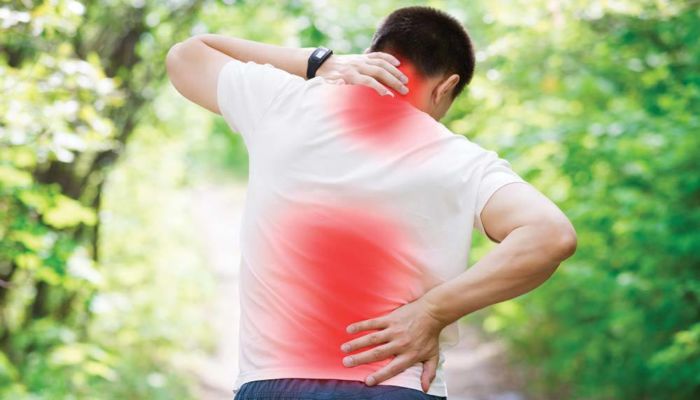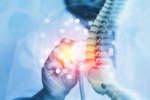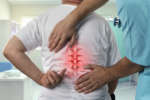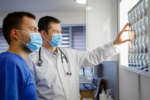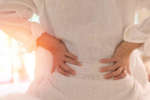Scoliosis can often present with minimal symptoms, or may carry with it chronic back pain, respiratory problems, or an inability to move and exercise properly. If you’ve been diagnosed with scoliosis or you suspect your child has scoliosis, it’s good to learn about the condition in order to get proper treatment. Read on to learn about what scoliosis is, when you should see a doctor, and what treatment is best.
What Is Scoliosis?
Scoliosis is the curve of the spine to one side. It could be either to the left or to the right. It is often first seen in children, and can even be noticeable in infants if there is a bulge in the chest near the rib cage. Scoliosis occurs in both men and women; however, it is more commonly seen in female patients. The causes of scoliosis, like many other medical conditions, are typically not known in most cases. In many instances, it is first noticeable between the ages of 10 and 12 and is more prevalent in children that have other comorbid conditions, such as muscular dystrophy, spina bifida, and cerebral palsy. Scoliosis treatment can certainly improve the quality of life for patients, and often includes physical therapy, scoliosis exercises, and in some cases, surgery.
There are several different types of scoliosis, such as adolescent idiopathic scoliosis, syndromic scoliosis, idiopathic scoliosis, and congenital scoliosis. The congenital type is present at birth, while the syndromic type is as a cause of another condition (such as cerebral palsy). The idiopathic type is one of the most common types that appear in adolescence as the spine begins to curve.
When to See a Doctor About Scoliosis
It’s wise to consult a doctor about scoliosis if you begin to see what may be symptoms of spine problems. In adolescents, there are a few key things to look for. You might see a rib cage that is not symmetrical, or a head that seems to be slightly off-center. You may also notice that one shoulder blade appears to be higher than the other. The person may also lean to one side, or it may look like their pant legs are uneven. In infants, you would be looking for different types of symptoms, including:
- A bulge near the rib cage
- A baby who lies curved, favoring the same side
- Problems with breathing and respiration
In an untreated adult, scoliosis would have a prominent look; you would be able to physically see the back curving to one side. Adults with untreated scoliosis may also have back pain. Severe cases may also cause impaired lung and heart function. A definitive way to receive a diagnosis is to have your physician order an X-ray.
What Is the Treatment for Scoliosis?
It’s best to be seen as soon as possible as a young adult if scoliosis is suspected, as early intervention is one of the best forms of treatment. Many physicians recommend scoliosis exercises, which are specific for each patient. The goal of these exercises is to try to reach a “normal” posture. Surgery is also a possibility for scoliosis treatment. Many patients also receive regular physical therapy.
In addition to exercises, physicians do often have advice for patients so as not to worsen symptoms of scoliosis. This includes advice such as:
- Don’t sleep on your stomach. This causes the thoracic spine to become even flatter, which aggravates scoliosis.
- Avoid competitive sports. Patients are not advised to avoid all activity, but high-impact activities such as football and competitive swimming is frowned upon. Trampolines are also not a good idea for those with scoliosis.
- Do be physically active. The type of physical activity you’re involved in does matter. Choose activities that are beneficial for those with scoliosis, such as dancing, soccer, stretching, and core exercises.
- Get enough sleep and use a quality mattress. Your mattress can make a big difference in how scoliosis affects you. Make sure you have one that is comfortable, but not too firm.
If you need more information about scoliosis, curvature of the spine, or would like to be evaluated, request an appointment at NewSouth NeuroSpine today. Our specialties include neurosurgery, orthopaedic spine surgery, spinal intervention, and physical medicine and rehabilitation.


